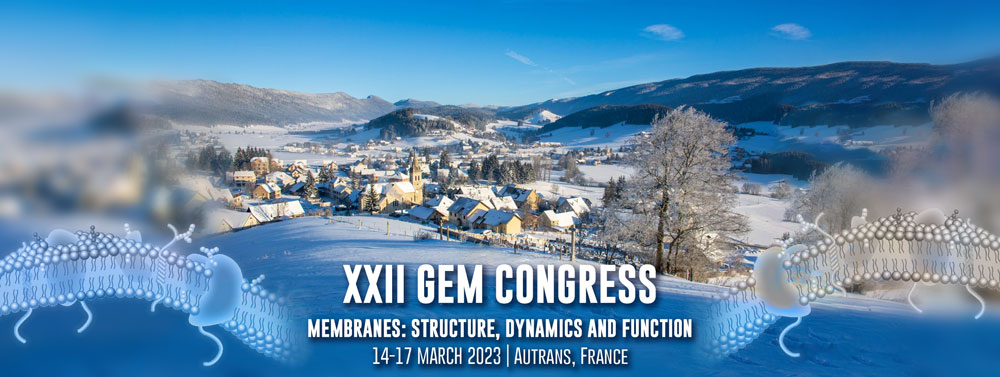Speaker
Description
It has been suggested that the intramembrane rhomboid protease GlpG can thin membranes, possibly explaining the observation that rhomboids diffuse faster than the high viscosity of the lipid membrane would allow. Molecular dynamics simulations have shown membrane thinning by GlpG in both phosphatidylcholine (PC) and phosphatidylethanolamine (PE) membranes. To experimentally test the membrane thinning hypothesis, we measured the thickness of multilamellar membranes containing differently long deuterated disaturated PCs and GlpG using 2H NMR spectroscopy. Surprisingly, GlpG did not influence the membrane thickness of the different PC membranes significantly (C12:0 to C16:0). Interestingly, lipid analysis of these samples revealed a small fraction of the E. coli lipids PE and phosphatidyl-(1'-rac-glycerol) (PG). These PE and PG lipids were co-purified with GlpG after recombinant expression, suggesting that PE/PG might be showing a preferential interaction with GlpG. Therefore, we measured 2H NMR spectra for 16:0/18:1-PE and 16:0/18:1-PG membranes (3:1 molar ratio) containing GlpG and found significant membrane thinning (1.1 Å per membrane leaflet). A substrate cleavage assay was used to determine the cleavage velocity of GlpG in the different membrane environments using a membrane-embedded model substrate LacYTM2, containing a FRET pair (EDANS and DABCYL) on either side of the cleavage side. Membranes were prepared at pH 4 where GlpG is catalytically inactive. A pH jump to 7 activated GlpG and after cleavage, the N-terminal fragment of the substrate is released leading to an increase in EDANS fluorescence. The cleavage velocity of GlpG calculated from the EDANS fluorescence curves showed an intriguing dependence on the membrane thickness.
In summary, the cleavage velocity of GlpG is dependent on how well the membrane environment hydrophobically matches the thickness of GlpG. Membrane thinning was detected only for PE/PG membranes, suggesting that only specific lipids e.g., PE, possibly through hydrogen bonds, can induce membrane thinning.
| Session | Interaction lipids/polymers/membrane proteins |
|---|

